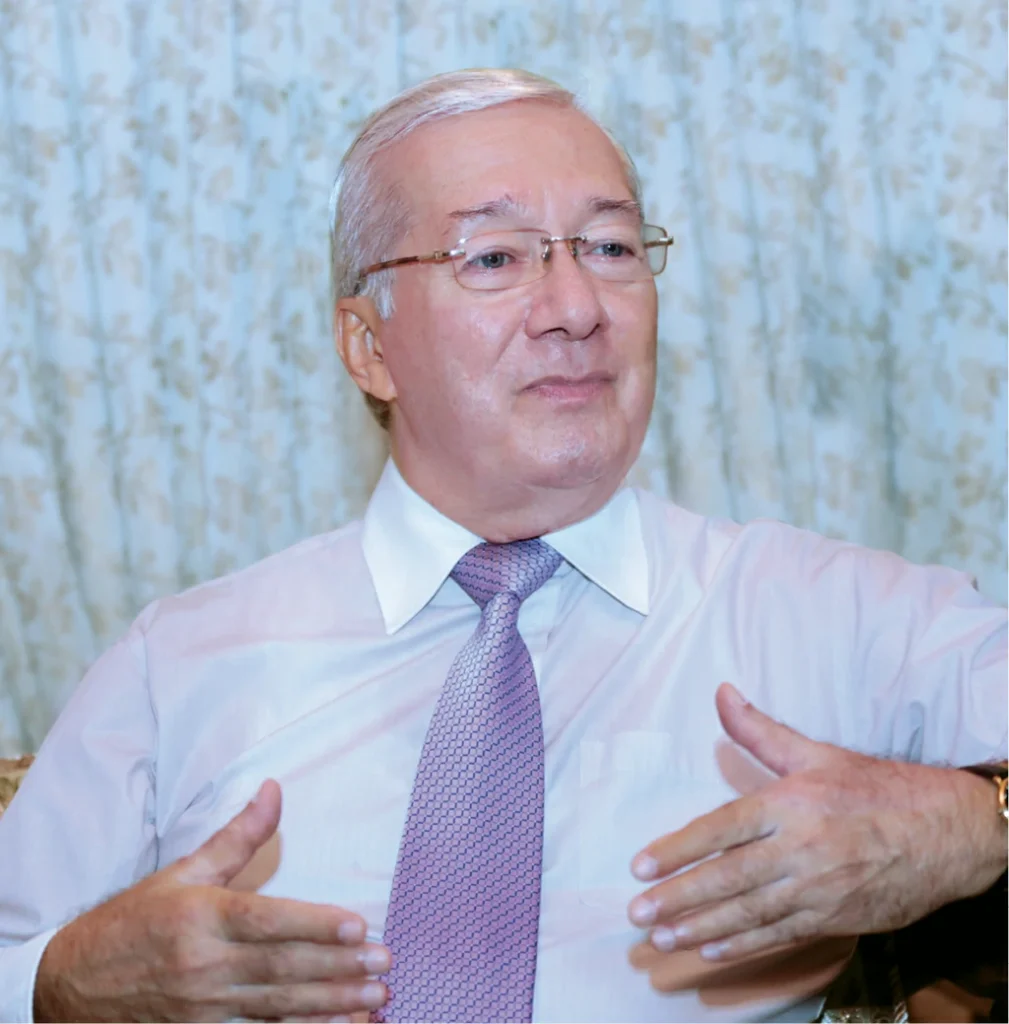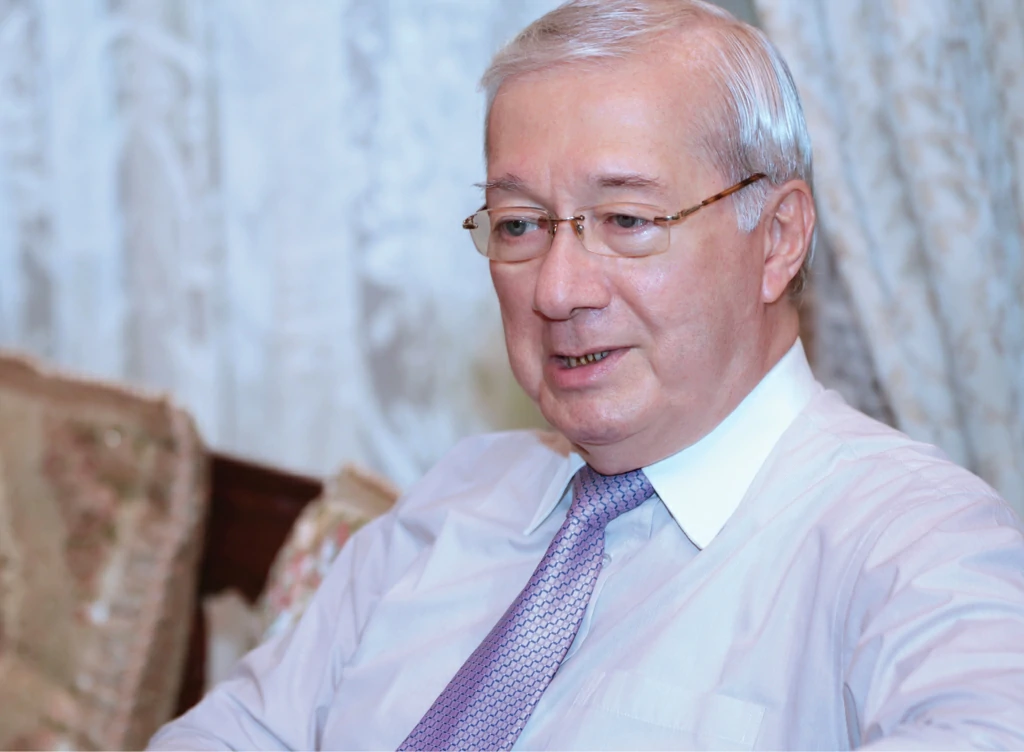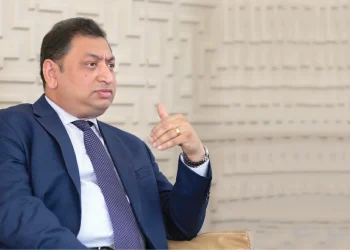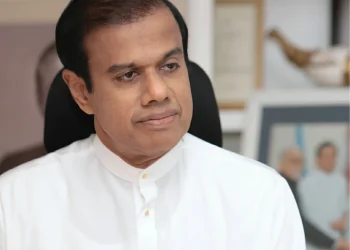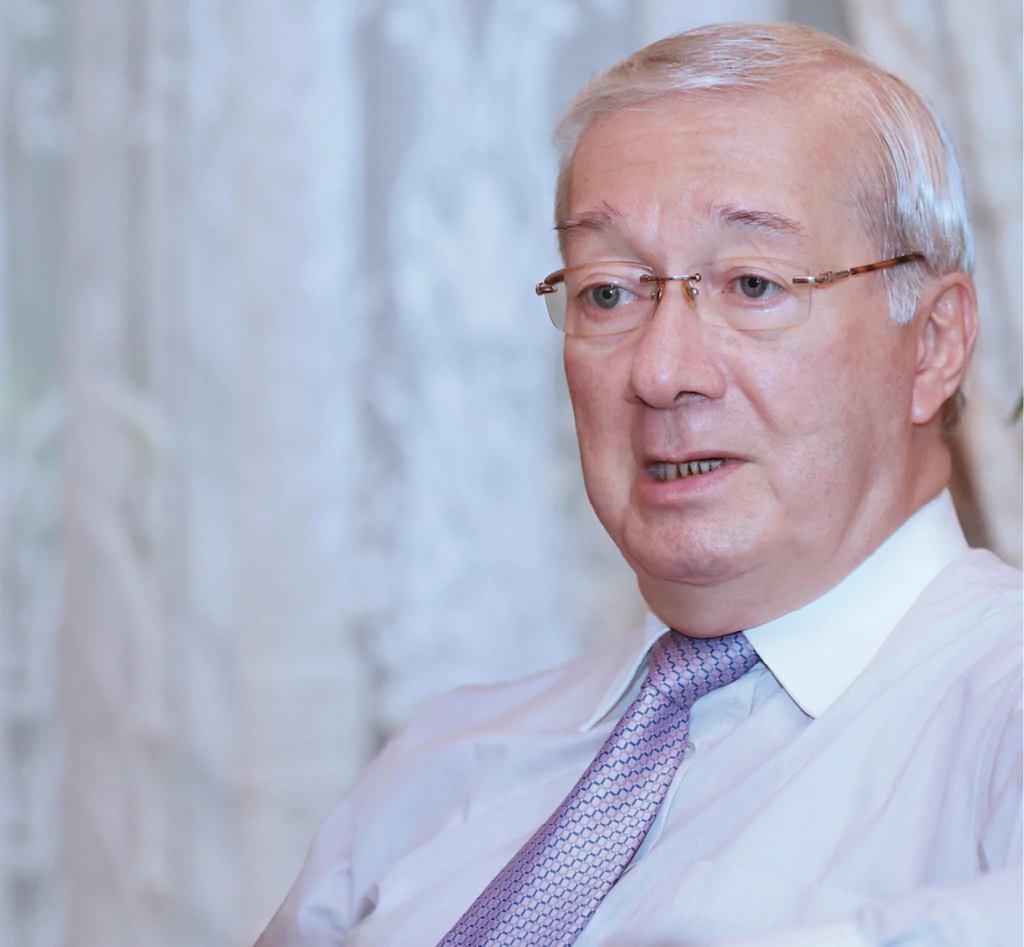
Spearheaded by its stakeholders, Ceylon Tea has forged through an exciting and at times trying journey spanning 150 years. The Colombo Tea Traders’ Association (CTTA) is the apex body that represents the interests of the industry and has been instrumental in propelling Ceylon Tea forward. David Janszé, former Director, George Steuart, and Consultant to the CTTA, has been with the industry since 1962. He speaks about the events that made the industry what it is today. He believes the future lies in value addition, producing quality over quantity and training the younger generation that will take up the helm of the industry in the years to come.
By Keshini de Silva | Photographs Menaka Aravinda
Could you tell us about the CTTA and its role in the 150-year anniversary of Ceylon Tea?
The tea industry in Sri Lanka commenced in the year 1867 when a Scottish coffee planter, James Taylor, became the first person to plant tea commercially. Mr Taylor, through his own experimentation, devised a formal method of manufacturing tea, and subsequently became the first person ever to ship tea from Sri Lanka, 23 lbs of tea from Loolecondera Estate, all the way to London.
Thereafter, the industry grew by leaps and bounds and by the first half of the 1890s, the tea industry was firmly established as the main commercial crop within the Island. The Ceylon Chamber of Commerce, which was established in 1839, was approached by the producers of Ceylon tea, who requested the establishment of an association to represent the Tea Traders of Sri Lanka. The organisation was to oversee the sale and export of tea. Therefore, in the year 1894, the Chamber of Commerce established the Ceylon Tea Traders’ Association (CTTA), later to be christened the Colombo Tea Traders’ Association, under its auspices. Around this same time, there were calls for a formalized tea auction system as well. The very first tea auctions had been held privately, in the offices of brokers; the first of which was conducted by a broker by the name of ‘Somerville’, sadly, that company not does operate anymore.
The CTTA Has Been Responsible For The Management Of The Tea Auction And Been In Charge Of Regulating And Monitoring The Trade.
Therefore, the tea auction in its current form and the CTTA came into existence almost simultaneously. Since then, the CTTA has been responsible for the management of the tea auction and been in charge of regulating and monitoring the trade. ‘The Trade’ does not mean just the Colombo traders and exporters, but everyone associated with tea. It is the apex body of the tea industry and the stakeholder associations of all the sectors are affiliated to it. Members of these stakeholder associations, such as the growers, the manufacturers and the brokers are given the opportunity to serve on the Colombo Tea Traders’ Association Committee, as well.
A phenomenal change took place with the nationalization of plantations in 1976, when all the plantations were taken over by the then Government. The Sri Lanka Tea Board was set up as the regulatory body. As a consequence of the Government vesting ownership of the tea estates in the State, it decided that the auction, too, should be vested in it. However, wisely, the Government realised that it did not have the experience or means to handle the auction. Therefore, through a Gazette notification, it was adjudged that the Ceylon Tea Auction would take place at the Ceylon Chamber of Commerce, where it would also be actively managed by the CTTA. Thankfully, there was no break and the tea auction did not face any kind of deterioration at a time when everything in the industry – such as the plantations – was deteriorating.
A Phenomenal Change Took Place With The Nationalization Of Plantations In 1976, When All The Plantations Were Taken Over By The Then Government.
Today, the CTTA has over 200 corporate members and every year a Chairman is elected – and may be re-elected for a successive term or two. The Association’s role has changed quite significantly over the years. In the year I joined the Trade, in 1962, of those attending the auction, about 60 per cent were British and of other foreign nationalities. Later, the Prime Minister S W R D Bandaranaike and afterwards Prime Minister Dudley Senanayake looked into Ceylonising the industry. Therefore, it was in the 1960s that Sri Lankans gradually took over the management of the tea industry and CTTA.
In the Ceylon Tea industry there are two major sectors, the sellers, who produced the tea, and the buyer, who exported the tea. They were kept separate for very good reasons. The brokers coordinated between the two at the auction. However, with the nationalization of estates quite a number of privately owned estates were fragmented and were then handed over to the smallholders. In this manner the smallholder sector was created. However, the smallholders did not have the facilities or the capacity as did the plantation companies to manufacture tea. Thereafter private companies started setting up factories, which would use the tea leaf grown by the smallholders for manufacture, hence the fifth sector of the industry was formed.
As time progressed, the President J R Jayewardene’s Government came into power and liberalized the economy. This paved the way for the opportunity of entrepreneurship in the industry. By that time the British had nearly all left and the very first generation of Sri Lankan Managers were in their 40s. Some young and dynamic tea traders, who did not wish to wait several years before they could climb to the top of the ladder, established their own exporting companies. This resulted in a proliferation of exporters. At the time the number of growers and manufacturers of tea also expanded. As the industry became crowded competition intensified.
Today One Of Its Most Important Roles Is In Keeping The Unity Between The Sectors Of The Tea Industry. With The Intense Competition There Has Been An Evident Rise In The Frequency Of Conflicting Views As Well As Self-Seeking Parochialism Amongst Sectors, So The CTTA Acts As A Moderator To Project A United Front.
When I joined the tea industry, it was still virtually a gentlemen’s club, with most of the Sri Lankans engaged hailing from the elite private schools in Colombo such as Royal, St Thomas’, St Peter’s and St Joseph’s College. Those from Trinity College, in Kandy, would predominantly go into the plantation sector. Everyone belonged to the same clubs, and many played cricket or rugby or both, whilst others were enthusiasts of these two sports. Every Saturday, after work, we would either meet at the clubs or attend a match. It was a gentlemen’s trade, as one’s word was one’s bond. For example, at the tea auction, there were rather large lots or invoices of tea on offer, which could be divided amongst several buyers. Therefore, if a buyer had bid for it and another asked for a share of the lot, and the buyer agreed, his word was guarantee enough. However, because of the intense competition, such verbal agreements are now not always honoured.
Therefore, as the slice of the cake became smaller, the role of the CTTA in regulating the trade became all the more difficult. Many in the industry attempted circumventing the regulations to acquire an advantage over the increasing competition. Consequently, punitive measures had to be introduced.
Today, the Chairmanship of the CTTA is actually a fulltime job. The CTTA has a pivotal role in developing the trade to effectively help the economy of the country. And it also exerts considerable influence at international fora. For example, the Inter-Governmental Group on Tea, under the aegis of the FAO (Food and Agriculture Organisation of the UN), which makes important decisions about the industry at a global level, includes representatives of the Sri Lanka Tea Board and CTTA at meetings. The CTTA has great influence and respect at these meetings.
Today one of its most important roles is in keeping the unity between the sectors of the tea industry. With the intense competition there has been an evident rise in the frequency of conflicting views as well as self-seeking parochialism amongst sectors, so the CTTA acts as a moderator to project a united front.
In terms of the celebration of the 150th Year Anniversary of Ceylon Tea, the CTTA by far plays the biggest role. While the Sri Lanka Tea Board is constrained by many regulations which apply to state institutions, the CTTA is able to organise most of these events much more efficiently. The CTTA plays the major role in all the events.
Looking back at the 150th Year milestone, what do you believe are the key events that have moulded the Ceylon Tea Industry or have propelled it to its current level?
The pioneers of the industry must be given much credit as they commenced operations in very trying circumstances. Many young men sacrificed their lives at the altar of the industry. As the tea industry itself started to take forward the commercial economy of the country, they were consulted by the leaders of the country. The first promotional agency, which was established in 1932, was the Ceylon Tea Propaganda Board. A regulatory function to ensure that orderliness prevailed in the industry, under the name – The Tea Control Department, was formed in 1933. Later on, in 1942 the Tea Export Commissioner’s Department was set up. The Tea Research Institute, which, since its inception in 1925, has contributed immensely by generating and disseminating new technologies related to tea cultivation and processing, was set up by the private sector. Following nationalization of the tea plantations, all these establishments came under the authority of the Sri Lanka Tea Board.
Finally, As The Tea Plantations Were In Such Debt, The Government Decided In 1992 To Hand Back The Management Of The Estates To The Private Sector.
One must also look beyond the origins of tea to the coffee industry of Ceylon, because it was the coffee industry that first created the plantocracy in Sri Lanka. It further became the model for the tea industry. The tea industry therefore had a great advantage and actually a head start. The industry was developed from 19 acres in Loolecondera to become a thriving agriculatural enterprise. Then emerged the plateau with nationalization. This was a period where there was a decline in the standards of production ethics and revered conventions. Finally, as the tea plantations were in such deep debt, the Government decided in 1992 to hand back the management of the estates to the private sector. The transformation was evident within a few years, and this factor prompted the Government to offer the ownership of operations to the private sector in 1995. The land was still vested in the Government. This saw the creation of the Regional Plantation Companies.
In my own view, this also led to a rather negative aspect. Previously, buyers, brokers and sellers maintained distinctly separate identities and ownerships, but then they all started to overlap; their lines of separation became blurred. One found, for example, that buyer/export companies invested in plantation companies or in broking companies, or in both. This created a conflict of interest and although some may not agree with me, it has created unhealthy competition.
Ceylon Tea Is Predominantly Manufactured Through The Orthodox Process. In 1965, Ceylon Became The Number One Exporter Of Tea In The World.
In 2010, the then Minister of Plantations, Mahinda Samarasinghe, had a very cohesive dialogue with the industry and he decided to introduce a promotion and marketing levy on tea exports to fund the promotional activities, among other aspects of the industry. A charge of three rupees and fifty cents per kilogramme of tea exported was levied, and this has in turn accumulated to several billion rupees today. Monitored by the Sri Lanka Tea Board, this was a fund created for the benefit of the industry and with the money earned by the industry. However, whenever the Sri Lanka Tea Board needs to access the fund, Cabinet approval, which is required, is never granted. There are also strong calls within the Cabinet to transfer this fund to the Treasury. However, there were strong objections from the trade, which were endorsed by the line Minister, and thankfully this has not materialized.
As one of the most senior members of the industry, what are your thoughts on the Sri Lankan tea export sector?
Ceylon Tea is predominantly manufactured through the orthodox process. In 1965, Ceylon became the number one exporter of tea in the world for the first time. China and India, of course, have always been the biggest producers of tea, yet their domestic population consumes most of it. However over the years East Africa has developed its tea production and Kenya has become a strong competitor.
China is by far the largest producer of tea, as well as the largest consumer of tea. They produce predominantly Green Tea and Oolong Tea. India is the largest producer of Black Tea, a combination of orthodox and CTC (Crush/Cut, Tear, Curl) teas. Sri Lanka is the largest producer of orthodox black tea. In the orthodox process of manufacture, the human element plays a significant role, while CTC teas are almost entirely machine processed. Kenya is now the largest producer of CTC teas. Today, Sri Lanka is the fourth largest producer of tea and the third largest exporter of tea. The UK, a huge tea consuming market that accounted for a very large volume of Ceylon Tea, and Egypt and Pakistan, in which markets Sri Lanka had a virtual monopoly, have now been taken over by Kenya. Generally, CTC teas are perceived to be stronger and to infuse faster than orthodox black tea – which is a claim that is refuted by the Sri Lanka industry – and are, therefore, considered suitable for teabags, while Orthodox teas are acknowledged to be of higher quality, and contain more subtle and a much wider variety of flavours than CTC teas. Consequently, Kenyan teas tend to be cheaper than Ceylon Tea.
The Middle East Is Another Region That Emerged As A Big Export Market For Ceylon Tea. In Fact, The Middle East Was Introduced To Ceylon Tea, During World War II When Coffee Became Scarce Due To The Restrictions In Exports From Brazil.
Sri Lanka commenced developing its tea market in the USSR, while India was still its major tea supplier, as a result of a bilateral agreement between the two countries. After the USSR fragmented, Sri Lanka stepped in to displace India and now it is the main exporter of tea not only to Russia, but also to all the CIS countries. The Middle East is another region that emerged as a big export market for Ceylon Tea. In fact, the Middle East was introduced to Ceylon Tea during World War II – when coffee became scarce due to the restrictions in exports from Brazil. They tried our low grown teas, which, when infused, are similar in colour to coffee and is a pleasantly strong and bitter brew. Thereafter, they continued drinking Ceylon Tea in moderate volumes. However, they did not have the resources to purchase great volumes of Ceylon Tea until the oil boom in the 1970s. Today, they are the largest buyers of our low grown teas. The Middle Eastern markets, collectively as a whole region, are the largest importers of Ceylon Tea, while Russia is the single largest country that imports Ceylon Tea. Russia, the CIS and the Middle East account for two thirds of our exports. However due to the volatility in these markets we are in quite a vulnerable position. Also, Russia is developing its very own packaging industry and has been introducing both tariff and non-tariff barriers as a protectionist mechanism, although it is a breach of the WTO protocol. Therefore, the volumes of value added teas being imported by Russia are in decline, but bulk teas still continue to be shipped to Russia, to service its own packaging plants.
In terms of emerging markets, currently we see that the Chinese consumer is moving very strongly towards the orthodox black tea. Therefore, this market will be a gold mine for Sri Lanka. China after all, does have a huge population, and an insatiable thirst for tea. India, which is another extremely populated country, has the potential to increase its consumption of Ceylon Tea. We all must do everything possible to develop these markets. However, the industry is not making enough of an effort to capitalize the prospects in these new markets mainly due to a dire lack of access to funds for effective promotional campaigns. Furthermore, there also does not appear to be sufficient commitment within the tea trade to develop new markets. However, we should not wait till it is too late.
Today, Sri Lanka Is The Fourth Largest Producer And The Third Largest Exporter Of Tea.
Australia, is a very price conscious market and purchases most of its requirement from Indonesia, on account of cheaper prices and lower freight rates. Ceylon Tea is deemed a premium product and is purchased in limited quantities. After many concerted efforts, Ceylon brands, in particular, Dilmah, have succeeded in obtaining shelf-space in supermarkets there, but they account for a small percentage of total imports into Australia.
In terms of emerging market trends and the future of Ceylon Tea, Sri Lanka should give quality precedence over quantity. A determined effort to truly focus on an overall upgrading of quality is imperative. Teas of inferior quality produced in large volumes will ruin the image of Ceylon Tea created perseveringly over past decades, while the best teas will always attract a premium price. However, it is very difficult to make the plantation companies and private factories understand this, as they feel volume will earn greater profits. This is not true. True to character, superior quality Ceylon Teas will enhance the entire price structure as well as compensate for the loss in volume.
The tea export market is constantly changing. What are your thoughts about the future of Ceylon Tea exports?
The subject of developing a tea nucleus concept, commonly known as the tea hub, has been debated for years, to no avail. The tea hub is essentially the creation of a separate zone, governed by stringent regulations, where suitable teas from many origins can be imported, blended and processed in value added form, to suit the various palates and markets, and thereafter exported. It is a concept adopted in countries such as the UK, Holland and Germany. At times, only a small component of Ceylon Tea is added to the blends, and then the product is marketed as Ceylon Tea. This is a travesty and there is nothing we can do about it. However, by setting up a hub in Sri Lanka we could exert greater control and ensure more Ceylon Tea is utilized in these blends. It is a misconception that the tea hub would result in sullying the image of Ceylon Tea. It is inconceivable that premium Ceylon Teas would be blended with anything but compatible, albeit lower priced, teas from other origins. It would support locally registered tea brands to expand into different segments of the global market and enhance the volume of value added exports of Sri Lankan brands, whilst also increasing Sri Lanka’s share of the global tea export trade. Dubai, which does not grow a single tea plant, has stolen a march over Sri Lanka and has developed an extremely successful operation, with appropriate infrastructure and facilities through which millions of kilograms of tea from every origin are imported and processed to suit consumer demands and then exported globally. Many of the world’s most popular tea brands have established their own packing facilities in Dubai, contributing to its success. While Sri Lanka procrastinates and vacillates in taking a decision on the tea hub concept, other countries have capitalized on it and it seems we have missed the bus. I think it is too late now. Such shortsighted attitudes, influenced by those who put their personal interests before that of the industry, should be set aside if the tea industry is to make any progress.
While Sri Lanka Procrastinates And Vacillates In Taking A Decision On The Tea Hub Concept, Other Countries Have Capitalized On It And It Seems We Have Missed The Bus. I Think It Is Too Late Now. Such Shortsighted Attitudes, Influenced By Those Who Put Their Personal Interests Before That Of The Industry, Should Be Set Aside If The Tea Industry Is To Make Any Progress.
Sri Lanka was the first producer country to venture seriously into the value addition of tea and we are the leaders in the field. In fact, it is said that Colombo has the largest number of tea bagging machines of any city in the world. Presently, we export a little over 50 per cent of our tea in value added form. We have the potential to do much better.
The Sri Lankan tea industry is known for having the best tea planters, tea manufacturers, tea tasters, tea blenders and tea marketers in the world. There is a great demand for our professionals across the globe. We have the needed talent and infrastructure and we have emerging markets in India as well as in China ripe for the picking. If we resolve to produce better quality teas and increase our volume of value added exports, the future of Ceylon Tea will be assured.
Tell us about yourself and journey in the tea industry?
My father was in the legal profession and for as long as I can remember I wanted to follow in his footsteps. Everything I did was with that mindset. I had decided to obtain a Law Degree and thereafter join Law College. However, while nearing the completion of my secondary education, there were some rather shocking incidents of University ragging of which the case files landed on my father’s desk. I immediately decided to change course in my academic pursuits and study for the London Advanced Level, join Law College and read for a Law Degree as an external student with the University of London. However, some month after I entered Law College, it was announced that Sinhala would be made the official language of the Courts. Although I could speak Sinhala reasonably well, I knew I would never be articulate enough to excel in that profession. I, therefore, decided to end my ambitions of pursuing a career in Law and seek employment in the private sector. I was truly fortunate to be selected as a Trainee Tea Taster – a misnomer, as tea tasting was just one aspect of the job description – with a Dutch company, Van Rees, in its Colombo office. Later, I was sent for further training to its Head Office in Rotterdam and its London office, as UK was a big market for Ceylon Tea at the time. 11 years later, I was invited to join George Steuart, the leading Agency House at that time, in the capacity of Manager of its Produce Marketing Department. With the nationalisation of plantation in 1976, I was requested by the Board of Directors to create and develop an initiative in Tea Exports. On successfully achieving this, I was invited to join the Board of Directors in 1979. In 2002, the Ceylon Chamber of Commerce engaged my services as Consultant to its Commodities Division, to work mainly with the CTTA. After which, I retired in 2013, but have continued to assist the CTTA and, concurrently, I am involved in organising the celebrations for the 150th Anniversary of Ceylon Tea.
Everyone Must Resolve To Put The “Industry First”. Then, Everything Will Fall Into Place. I Hope The Mindset Of The Industry Will Change And It Will Look Towards The Future More Rationally And Objectively.
Thoughts for the future generations and those involved in the Ceylon Tea industry?
One of the main events in connection with the 150th Year Anniversary of Ceylon Tea is an outreach programme in the rural areas to highlight the opportunities in the Ceylon Tea industry. While I was working with the Ceylon Chamber of Commerce, I conducted numerous workshops for undergraduates and Advanced Level students with interests in the Agriculture sector. Some of the undergraduates of the Agriculture Faculties, who attended these workshops were extraordinarily intelligent, although not particularly articulate in the English language, and they asked the most pertinent questions. It would make me happy to see many of them joining the Ceylon Tea industry. We need people like that. When I joined the industry in 1962, I received training in every aspect of the trade. I was sent to the port to understand the operations there and to acquire experience in handling the export documentation, to the warehouses to witness how tea blending and tea packaging took place. In the office, I would familiarise myself with post-auction documentation. I was not permitted to buy at the auction until I knew the names of all estates and was familiar with the character of teas each produced. After all, one cannot bid and buy competently and confidently, unless one knew the commodity.
However, that does not happen anymore. Today, youngsters, on joining the Trade, are being thrown into the deep end. They are not being given the same depth of training we once received. There are many instances where these young buyers do not even taste the teas. During my time, we were trained to taste and understand the quality trends, how the market would move and how the weather affected the quality and quantities of tea. Currently, tea tasting has ceased to be an important aspect in trading. An informative initiative must be taken to establish a tea institute to train those in the industry. I know of private institutes that conduct courses to prepare those aspiring to join the Tea Trade and they cannot cope with the numbers. When I joined the tea trade, it was considered the ‘glamour industry’, as it offered the best remunerations, best perquisite packages, provided opportunities of travelling overseas and enabled one to forge friendships with one’s counterparts in the vast global tea trade. However, the industry has lost much of its shine now and is not that attractive to young school leavers, who seem to prefer the Apparel and IT Industries. The Tea Industry must try and regain that touch of glamour and provide the new-comers with sound training, as they will eventually be at the helm.
The CTTA is doing its very best to sustain the industry. Everyone must resolve to put the ‘Industry First’. Then, everything will fall into place. I hope the mindset of the industry will change andit will look towards the future more rationally and objectively. After all, the coffee table book – pardon me – The Tea Table Book, published to celebrate the 150th Anniversary of the Industry is titled, “Ceylong Tea: The Trade That Made A Nation”.
